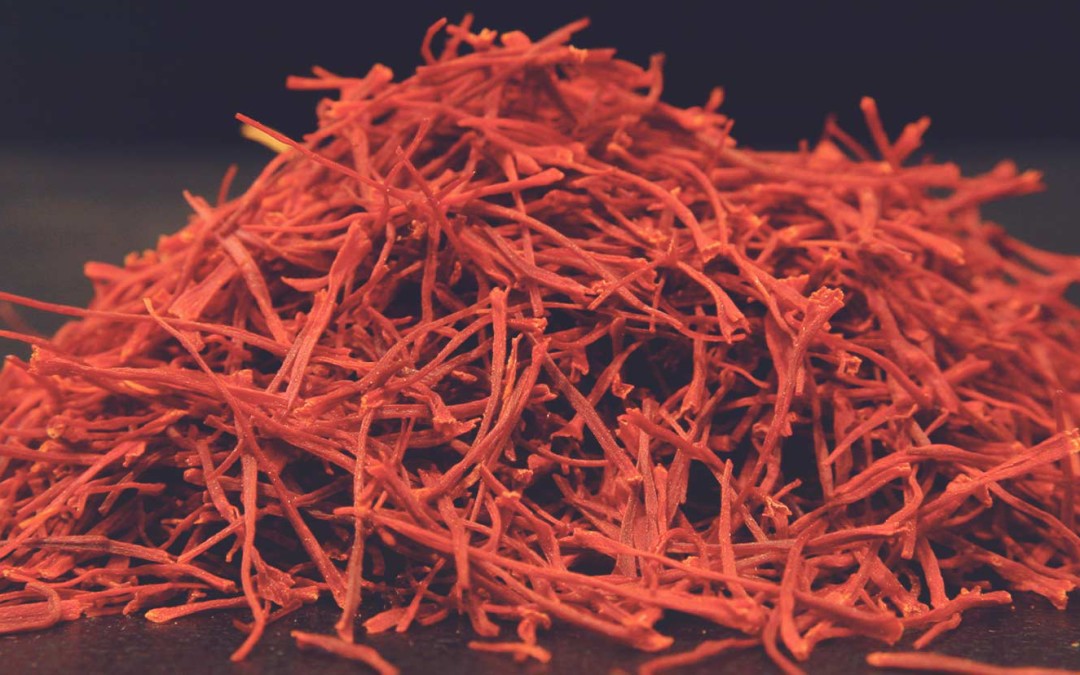Now that we’ve learnt more about growing and preserving the precious pistils of this enchanting flower, let’s discover what are the main saffron processing steps by asking Vincenzo how to get saffron powder from the flower.
First of all, the blooming: in what season are pistils picked?
Saffron is planted in summer -when the corm is at rest- on a soil where planting preparation has started in the previous autumn. Blooming begins in mid-October, after the first spathes emerged, and goes on for 15, 20 days. That is the right moment for harvesting: to ensure best quality pick flowers before it opens up.
This means perfect timing: it is necessary to be there at dawn and get ready for the harvesting which, of course, is to be done by hand.
How many and what are the following processing steps?
Once the first step is done, it’s time to separate the crimson stigmas from the rest of the flower. Stigmas are then dried. Many insist drying should take place either on the fireplace or by the embers. On the contrary, I strongly believe that drying in an electric oven ensures the best results in terms of purity.
The reason is simple: temperatures must be checked with the utmost accuracy, as we know that exceeding certain levels will result in a loss of organoleptic properties and a loss or alteration of thermolabile elements. Moreover, not only exposition to wood embers does not ensure the conservation of said properties, but also results in a strongly uneven treatment of the product and exposes it to smokes and smells. This would undoubtedly alter saffron original fragrance.
Electric oven also allows accurate control on humidity and exposure time.

As for me, the production cycle is over!
I mean, I do not produce saffron “powder”, I rather process spice stigmas and threads. What reasons could I have to crush such a pure product? None.
How can we recognize high quality saffron?
First of all, choose threads over powder, though this doesn’t necessarily mean high quality. Then, pay attention to the color (crimson, brick red), which indicates the correct drying rate. The thread must be dry to the touch. Finally, the olfactory analysis: saffron has its own characteristic smell which varies, over the first two/three months after harvest, according to the quantity of safranal (responsible for its aroma). Saffron’s smell later stabilizes but changes again when it gets old and turns more “pungent”.
Any preservation suggestion?
Saffron must be stored in glass containers, in a dark, dry place, at room temperature up to a couple of years. Of course, this applies to pure, additive and preservative-free saffron, definitely not to powder.
Beware saffron powder! You’ll often read “saffron” but who knows what’s inside… Do you fancy a tasty risotto Milanese made with naturally grown stigmas?
In the next article of our blog we’ll discover the best food pairings for saffron!


Recent Comments